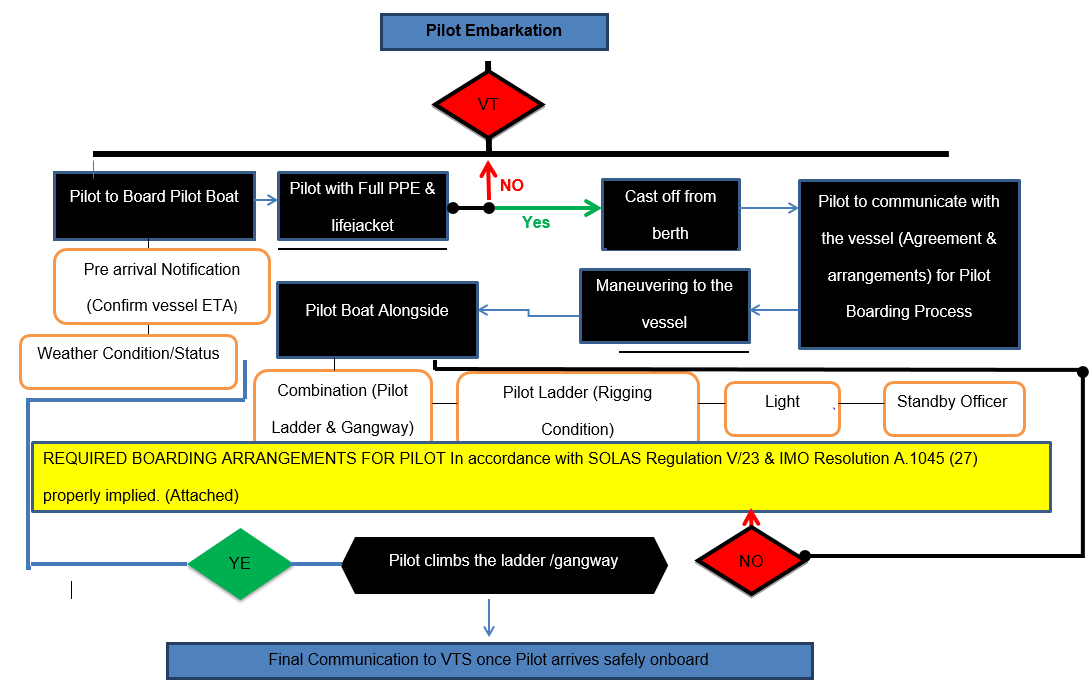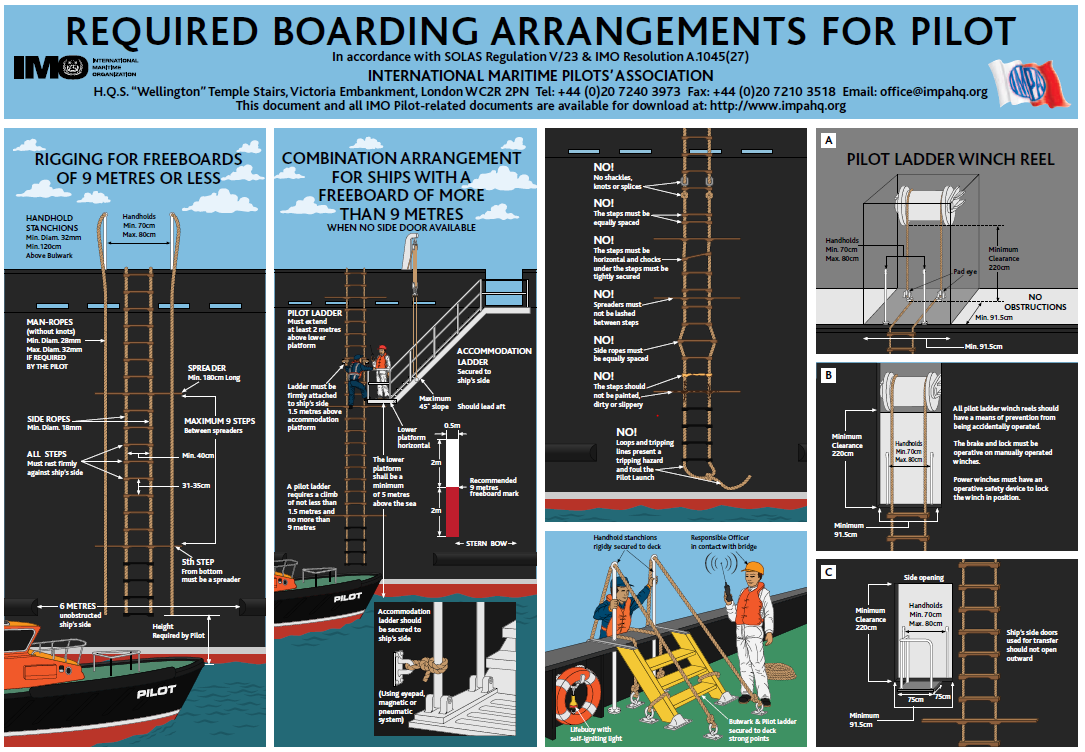Pilot embarkation is the task that allows the pilot to get to the ship safely. Some procedures enable the process to be successful. The paper would discuss the embarkation task through the Hierarchy Task Analysis.
Hierarchical Task Analysis is a study that adheres to tasks, their descriptions, and their sub-goals. It identifies the major work of the organization or a project in a system. The process involves breaking down of those tasks into subtasks and goals into sub-goals. It produces a good description of tasks in a hierarchical structure of goals and sub-goals, operations and plans (Braverman, Berger & Meiran 2014)).
The analysis has various steps that are helpful in identifying the tasks. The first one requires one to identify the purpose and define it. It also requires one to collect information from the field. The process of subdividing sub-goals should continue as it enables one to determine even the smallest duties. One would also need to define all the plans that lead to a particular sub-goal and even the goal. HTA developed in the 1960s as a result of the works of Annett and a few other scientific analyses (Ainsworth 2009).
The Purpose of the Analysis
HTA can be the basis for future studies. One needs to study the HTA to have a clue about the hierarchical structure and different tasks. The process can help to deal with minor tasks and do away with tasks that are not essential. When the study includes a conglomeration of works, it may help to save time and energy. Once an HTA is in place, it helps in system documentation (Wu 2011). The HTA assists in comparing different approaches to supporting a task. It builds teamwork and cohesiveness especially when members understand the tasks and plans at each stage (Hollnagel 2003).
The primary task is the pilot embarkation. The subdivision of the work into the sub-goals involves many aspects. There are codes for embarkation and disembarkation, and sometimes they vary with each country’s laws. But there are also world general standard procedures for maritime processes. Another important aspect is the pilot boat. A pilot ladder has to be available also on the side of the vessel. The embarkation area has to adhere to the standard codes. There are workers involved in the embarkation process that also communicate relevant information to the pilot. The ropes, the winch, and the hoist must also be available. The rules provide for penalties if any of the persons responsible for certain tasks do not fulfill their tasks as stipulated in the rules of work (Wu 2011).
Agreement Between Stakeholders
The stakeholders are the pilot, the shipping authorities and rules, and the ship staffs. The pilot boat must meet the requirements of the Merchant Shipping Regulations and the Maritime Coastal Agencies Code of Practice for the Safety of Small Work Boats and Pilot Boats (Dhillon 2011). The Competent Harbor Authority has to license or approve all pilot boats operating from its harbor. It has to ensure that they are in good condition and suitable for such services.
The coxswain must ensure that the pilot ship has all its safety requirements on board before it leaves its berth for the vessel. An up to date log must be ready at all times. All mooring ropes should remain on shore. The pilot and the crew must have safe passages between them. The pilot and the crew must have knowledge of the stowage of the safety equipment and its operation (Dhillon 2011).
Sources of Task Information and Means of Data Acquisition
The CHA’s routine reports should include the crew of the vessel. The reports must be conclusive and have all the people and tasks required for the journey. When outside the pilot boat’s cabin, everyone must wear a life jacket. The pilot and crew must operate in the right gear. At all times, the personnel must keep checking the regulatory requirements and instructions. It is safe for the pilot not to wear the lifejacket while inboard. The jacket might prevent him or her to get to safety in case of an emergency. When the pilot is on the pilot boat, he or she needs to follow the crew’s instructions (Crandall, Klein & Hoffman 2006). All information being relayed and obtained must be formal through the radio calls and record books. The maritime rules are the main source of embarkation procedures.
Validity of Decomposition with Stakeholders
Ships should maintain their docking and passage routes. If they enter the pilot boarding and landing area, they may hinder the transfer of pilots. They should also wait for instructions for pilot boarding. Sometimes the pilot boat may call upon the ship to move to the area for the transfer of a pilot to occur. The CHA should identify the landing and boarding areas for the pilots. In the professional maritime world, safe pilot embarkation is essential (Bisantz & Burns 2009).
When the boat approaches the ship, sufficient communication between the ship and the pilot boat must be in place. The communication may require the ship officer to lower the pilot ladder on a particular side. They must also relay information about the distance that should be available between the pilot boat and the ship. Their speed is also important so that the process does not hurt the pilot or ruin the pilot boat. Using the light at night helps the people involved in the transfer to maintain safety standards.
As the boat approaches the ship, the pilot and Deckhand should be in the Cabin until the Coxswain gives instructions to them to proceed forward (Berlingieri 2014). The Coxswain is responsible for instructions on whether the transfer should take place or abort the procedure depending on the safety of the pilot. The pilot ladder should be in good condition and if not the pilot can request for re-rigging or replacement of the ladder. He or she can also refuse to embark until a safer means is available (Norros 2004).
Significant Operations
The supervising ship’s officer and other people working on the transfer must be in constant communication with each other. The Coxswain is responsible for how the pilot boat moves around the vessel. However, the pilot has to choose when and if he or she can embark. The pilot needs to have the right attire, approved by the marine authorities, before leaving the cabin. The distance of the pilot boat would depend on the length of the climb. Some pilot boats have hydraulic boarding frame to increase the pilot’s safety. In case there is any problem with the pilot boat leaving the ship’s side, the Coxswain must contact the Master of the vessel for guidance (Costafreda 2011).
Data Acquisition


Pilot embarkation has to align with particular rules. If the people involved in the process do work in their jurisdiction, they make the entire task very safe and successful. The HTA enables the researchers to find the primary goal and sub-goals. It also allows for improvements in the system.
References
Ainsworth, L 2009, ‘A task analysis of the task analysis process’, Proceedings of the Human Factors and Ergonomics Society Annual Meeting, vol. 53, no. 24, pp.1835-1838.
Berlingieri, F 2014, International maritime conventions (Volume 2), Taylor and Francis, Hoboken.
Bisantz, A & Burns, C 2009, Applications of cognitive work analysis, CRC Press, Boca Raton.
Braverman, A, Berger, A & Meiran, N 2014, ‘The hierarchy of task decision and response selection: A task-switching event related potentials study’, Brain and Cognition, vol. 88, pp.35-42.
Costafreda, S 2011, ‘Meta-analysis, mega-analysis, and task analysis in fMRI Research’, Philosophy, Psychiatry, & Psychology, vol. 18, no. 4, pp.275-277.
Crandall, B, Klein, G & Hoffman, R 2006, ‘Working minds’, MIT Press, Cambridge, Massachusetts.
Dhillon, B 2011, Transportation systems reliability and safety, CRC Press, Boca Raton, Florida.
Hollnagel, E 2003, Handbook of cognitive task design, Lawrence Erlbaum Publishers, Mahwah, New Jersey.
Norros, L 2004, Acting under uncertainty, VTT Technical Research Centre of Finland, Espoo, Finland.
Wu, Q 2011, ‘Analysis about hierarchy needs model of technology employees, AMR, vol. 281, pp.243-248.